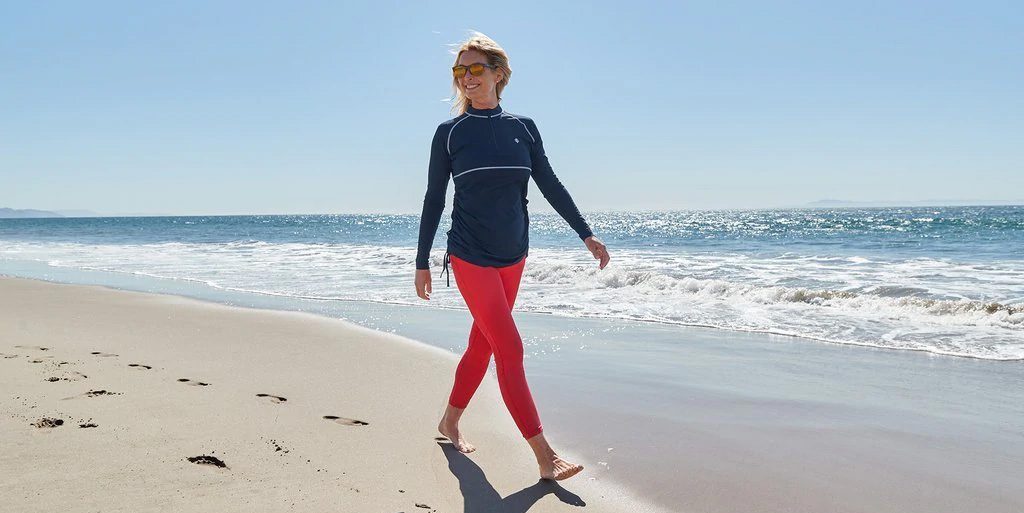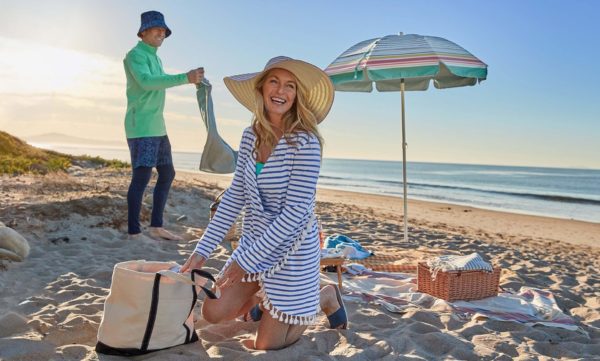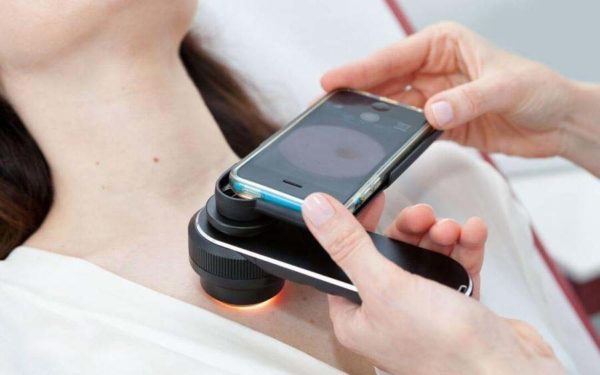Why it’s just as important to use lower body sun protection for UV rays
Most people already know, to a certain extent, how UV rays can negatively impact their skin’s health. We adore the sunshine, so when we’re about to spend a lot of time in it, we give ourselves and our loved ones friendly nudges: wear sunscreen—at least on your face, don’t forget your hat and sunglasses, find some shade when you get to the beach, and so on. That’s great advice! But we’re here to remind you why it’s important to include some lower body sun protection in those friendly sun-warning nudges.
Considering sun exposure
Sun exposure is typically from the top down. The sun sits overhead, making daily exposure most common on the scalp, face, ears, neck, arms and hands. For men, the trunk of the body is common, and for women it’s the legs.
While skin cancer most commonly develops in sun-exposed areas, it can also occur in areas that are not typically exposed to the sun. You can reduce your risk by limiting exposure to UV radiation, especially by taking a whole-body approach.

Certain elements reflect UV rays
The sun may hang above, but that doesn’t mean UV rays aren’t coming at you from all angles. From lounging on the beach to getting in and out of your car, you’re not always vertical. And even when you are, there’s reflection to consider.
In the days of sun-bathing, when we didn’t know better, it was common for people to use tanning mirrors and reflective devices to concentrate UV rays. This was done to tan faster, but also resulted in faster skin damage.
Thankfully, those reflective devices have lost their popularity. However, there are natural elements in our environment that act in a similar manner. Water, sand, concrete, and snow all reflect the sun’s rays.
Snow & Altitude
Don’t let the cold fool you. Snow is highly reflective and can cause sun damage, even when the sun is hidden by the clouds. Thankfully, lower body sun protection is easier as we’re usually pretty well-covered when there’s snow on the ground. However, in BC where the winters are mild, it’s not uncommon to ditch your layers while being active on the ski hills.
Some things to keep in mind on the slopes is that on a sunny day, snow can reflect up to 80% of UV radiation. This radiation also increases in intensity by about 10-12% for every 1000 metres in altitude due to a thinner atmosphere. If you’re up on a mountain in the sunshine, you need to be extra vigilant with sun protection.
Pro-Tip: sun protective clothing is created to be breathable, cool and moisture-wicking. This can be layered to help keep you comfortable for sunny days in the snow.

Sand, Sun & Water
While it’s easy to layer in the snow, beachgoers typically do the opposite. For most sun-seekers, clothing is avoided to prevent tan lines and keep cool. Layers in the water can be a drag, meaning that bathing suits often have minimal fabric.
Other factors to consider are that the sun is strongest in the summertime, and UV rays pose the biggest threat from 10am—4pm. Incidentally, that’s when we’re usually out cooling off in the water, either boating, paddleboarding, swimming, or suntanning at the beach.
Water amplifies the intensity of the sun’s UV rays, and doesn’t stop rays from passing through. Even half a metre underwater, UV rays are still 40% as intense as at the surface. In and out of the water, our whole bodies—legs included!—are at risk of sun damage.

Concrete, Pavement & House Paint
If you’re out for an afternoon run or walk, there are a variety of reflective surfaces to consider for UV exposure. These can include the pavement or asphalt that you’re walking on, or the paint on buildings you’re walking past.
Some everyday reflective surfaces include:
- House paint that can reflect up to 22% of UV radiation
- Concrete which reflects about 8-12% of UV radiation
- Asphalt that reflects about 4-8% of UV radiation
- Even soil and grass that can reflect up to 6%.
While sun burns can significantly increase the lifetime risk of developing skin cancer, daily incidental exposures are not to be ignored. Damage can accumulate over time and be detrimental to overall skin health.
Here’s how sun damage works
When exposed to UV radiation, your body produces and releases more of the skin pigment melanin to absorb the UV radiation. This darkens your skin, representing skin damage.
You should concern yourself with these two types of UV radiation: UVA and UVB. While UVA is predominantly associated with aging and UVB with burning, they can both have negative effects. UV damage harms the DNA in skin cells, which can lead to genetic defects or mutations. These can ultimately lead to skin cancer and eye damage.
It takes years for the effects of repeated sun exposure to show. That’s why it’s important to cover up from head to toe starting at a young age.
Sun protective clothing can be a lifesaver
Your best bet to increase your lower body sun protection and to ward off UV rays is to wear UV protective clothing. Fabrics that are designed to block UV rays act as a shield from the harsh powers of the sun and can be great for active lifestyles. You’ll get a protection of UPF 50+, whether wet or dry. UPF50+ swim clothes can swim skirts and swim leggings for the lower body. These garments will save you from feeling waterlogged and heavy while swimming. They also won’t break down from the chemicals found in chlorinated pools.
At Kelowna Skin Cancer Clinic, we offer a variety of cancer-prevention services and treatment options. We are strong advocates for prevention and enjoying the outdoors safely. For more information on UPF clothing, be sure to check out our blog post on All You Need to Know About Sun Protective Clothing.




